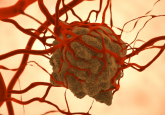Potential therapeutic targets discovered in myelodysplasia syndromes
Researchers from Cincinnati Children’s Hospital Medical Center (OH, USA) have reported that a key protein, termed TRAF6, drives the development of myelodysplasia syndromes (MDS). Based on this MDS mechanism, they have identified several potential molecular targets for treating the premalignant condition.
TRAF6 normally functions as an immune sensor of pathogens by interacting with Toll-like receptors; however, the researchers discovered that TRAF6 overexpression drives the onset of MDS, which in turn can lead to acute myeloid leukemia.
The team, led by Daniel Starczynowski (Cincinnati Children’s Hospital Medical Center), utilized a mouse model to demonstrate that overexpression of TRAF6 in hematopoietic cells led to impaired hematopoiesis and bone marrow failure.
In order to identify molecular targets relating to this TRAF6 mechanism, the scientists conducted a global proteomic analysis of human leukemia cell samples. The analysis highlighted a novel substrate of TRAF6 termed hnRNPA1, which acts as an RNA-binding protein. Moreover, the team discovered downstream interactions of TRAF6 with Rho family protein Cdc42, which is associated with the regulation of cells also implicated in cancer.
In addition to the role of TRAF6 in MDF, the researchers also uncovered a new immune-related function for the protein. They demonstrated that in response to pathogens TRAF6 regulates RNA isoform expression, a function important to hematopoietic cells during infection. The team therefore further elucidated the role of TRAF6 in both health and disease.
The researchers suggest that all of the substrates identified in this study could potentially be targets for treating MDS triggered by TRAF6 overexpression. However, future studies are needed to test the therapeutic potential of these molecular targets.
Starczynowski concluded: “We found that TRAF6 overexpression in mouse hematopoietic stem cells results in impaired blood cell formation and bone marrow failure. Based on our paper, a number of therapeutic approaches can be tested and directed against TRAF6 and other related proteins responsible for MDS.”
Source: Fang J, Bolanos LC, Choi K et al. Ubiquitination of hnRNPA1 by TRAF6 links chronic innate immune signaling with myelodysplasia. Nature Immunol. doi:10.1038/ni.3654 (2016) (Epub ahead of print); https://www.cincinnatichildrens.org/news/release/2016/bone-marrow-disorders-12-29-2016





